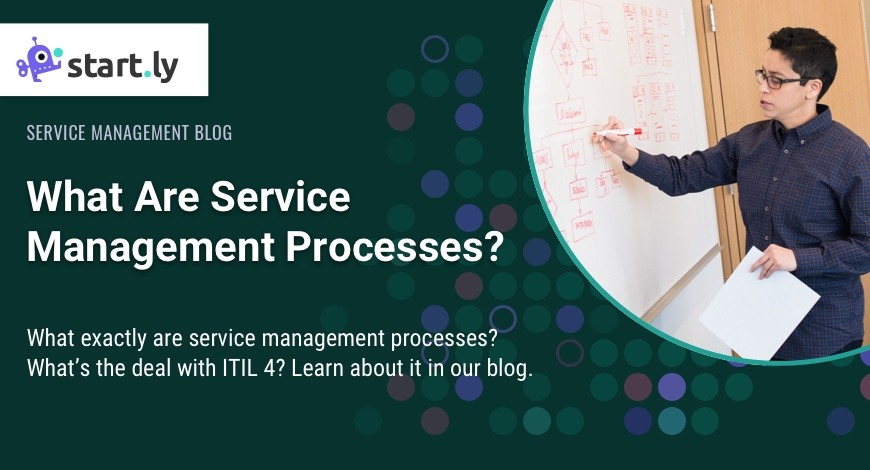A service management process is a framework that outlines best practices for companies that deliver services to their customers. The importance of service management cannot be overstated: this practice helps you create the appropriate mix of people, processes, and technology to successfully fulfill (and exceed!) your customers’ expectations. Service management processes can be applied to many different fields, but are particularly useful in the context of IT. In fact, IT service management is essential when designing, creating, delivering, and supporting IT services.
What Is an Example of a Service Process?
ITIL service management processes are perhaps the most well-known example. The Information Technology Infrastructure Library or ITIL, articulates processes, procedures, tasks, and checklists that can be applied to any organization. The ITIL service lifecycle in IT would look like this:
- Service Strategy – The first step is to decide which IT services are going to be delivered and what the goals for your IT service company are.
- Service Design – Next, you must determine your infrastructure, looking at your resources and determining how to utilize them best in terms of the current project.
- Service Transition – Once strategy and design are in place, implementation and transition happen. With every implementation, there will inevitably be changes. Service transition refers to the practice of leaving room for unexpected changes and allowing flexibility to adapt.
- Service Operation – As you continue to provide services, it is important to monitor for issues that arise on the operational side of your offerings.
- Continual Service Improvement – When issues occur, this provides the perfect opportunity for improving your service. In addition to issues, continual improvement comes from feedback and emerging technology and innovations in the wider market.
What Are the Service Management Processes of ITIL?
Each stage listed above has its own service management processes in ITIL. For example, within the service strategy stage, the process looks like this:
- Definition of markets
- Development of strategic assets
- Preparation of deployment
- Definition of offers
- Financial management
- Return on investment
- Service portfolio management
- Demand management
These each contain specific steps that can be followed to complete the service strategy stage of the overall ITIL lifecycle.
All of the service management processes of ITIL follow the seven guiding principles of this practice. Those principles are:
- Focus on value
- Start where you are
- Progress iteratively with feedback
- Collaborate and promote visibility
- Think and work holistically
- Keep it simple and practical
- Optimize and automate
What Are the Different Types of Service Processes?
ITIL 4 processes are just one way to approach service management. Other types of processes for IT include:
- Business Process Framework (eTOM) – Originally designed for telecommunications service providers, this service process can be adapted to any service-focused business.
- COBIT (Control Objectives for Information and Related Technologies) – Specifically for information technology management and IT governance, this framework defines a set of generic processes for these areas.
- ISO/IEC 20000 – This is the international standard for IT service management and delivery and can be used in combination with other frameworks.
- FitSM – This streamlined service management framework is often used for small to medium scale IT service management.
- Six Sigma – Often used in business, Six Sigma’s techniques and tools for process improvement can easily be applied to IT service management for excellent results.
- MOF (Microsoft Operations Framework) – Focused around Microsoft technologies, this framework provides 23 documents that lay out the entire lifecycle of IT services.
- TOGAF (The Open Group Architecture Framework) – This framework focuses on software and is often used to guide technology implementation processes.
Startly: Streamlined Service Delivery Software
Whichever process you end up using for your IT service provider, you’ll need top of the line tech to implement those processes and deliver your services. Of course, there’s many different solutions out there, and often IT service companies end up using too many at the same time. From costly applications that track ticket and service requests to packages that track assets and change management needs, your tech stack can quickly proliferate.
Remember the “keep it simple and practical” principle from ITIL? We’ve nailed that here at Startly. We’re your all-in-one solution that helps you improve responsiveness and customer satisfaction, as well as increasing productivity and cost efficiency. What more can you ask for? But don’t just take our word for it—try our software free and experience a sensational service management software.

